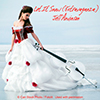Slash Chords Are Not Brandished By Slashers!
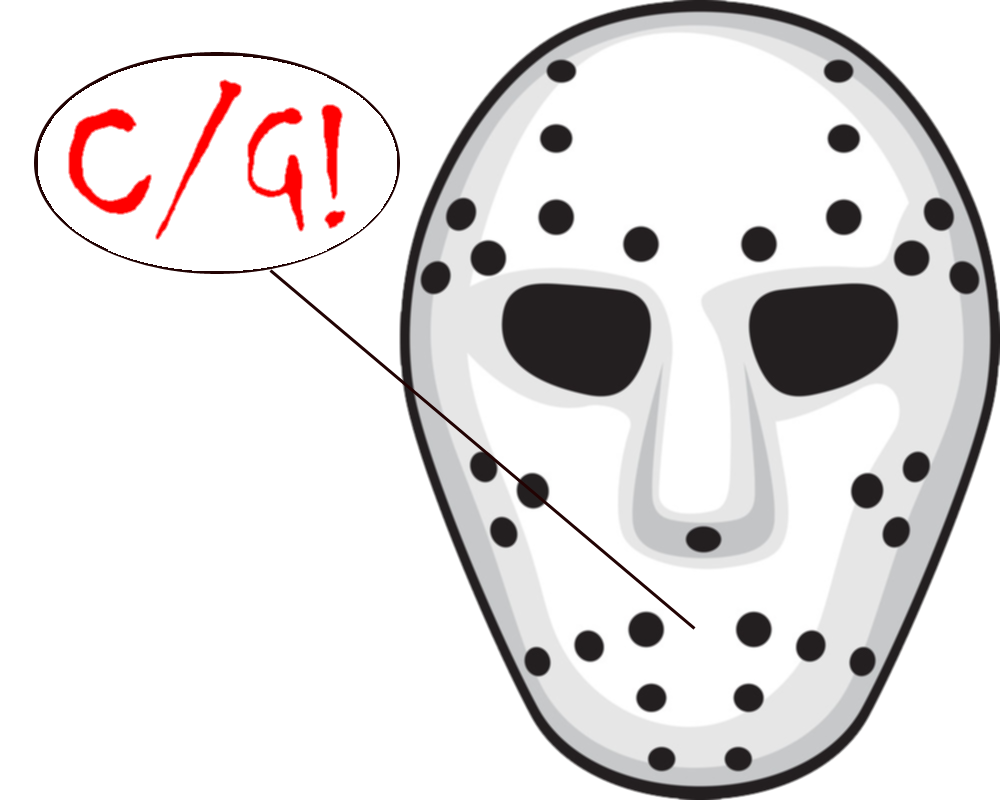
Confronting Your Fear Of Slash Chords
Slash chords. Aren't they something that serial killers wield? That might be what I'd think if I were a horror film fan. (I'm not.) I'd probably have a mental image of a serial killer running around with a musical instrument slashing people.
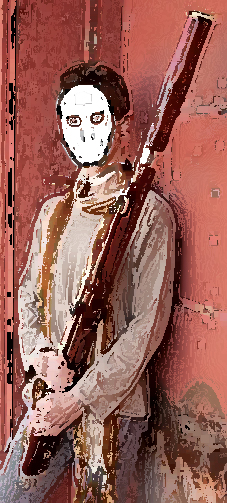
That image would go something like this: Jason Voorhees of Friday the 13th fame - in his goalie mask - playing a bassoon - a knife attached to his thumb - slashing people when he plays certain notes. (Bassoonists will laugh at this I hope. If you're not a bassoon player, it helps to know that thumbs are used quite often. I played bassoon for several years but never thought to attach a knife to one of my thumbs. Or wear a hockey mask. Go figure!)
The thought of Jason slashing people in this way is a ghastly thought, isn't it? But I can assure you - as a non-violent person - that this is not the truth about slash chords.
So if slash chords have nothing to do with slashers, why is the word "slash" employed? The answer is frighteningly straighforward. Here's what a slash chord is: Quite simply, it's a chord symbol that uses the slash symbol to separate a chord name from a specific bass note. If that's all you need for a definition, then you can stop reading this webpage article (though I hope you won't). But if you're still not sure what this "slash chord" business is all about, please keep reading.
To dispel the fear that a slash-chording horror film icon creates in us, let's start with a common non-slash chord - C - and learn what the symbol tells us. This chord symbol (C) is how we represent a c major chord. Here's how it looks in staff, chord diagram, and tablature notation.
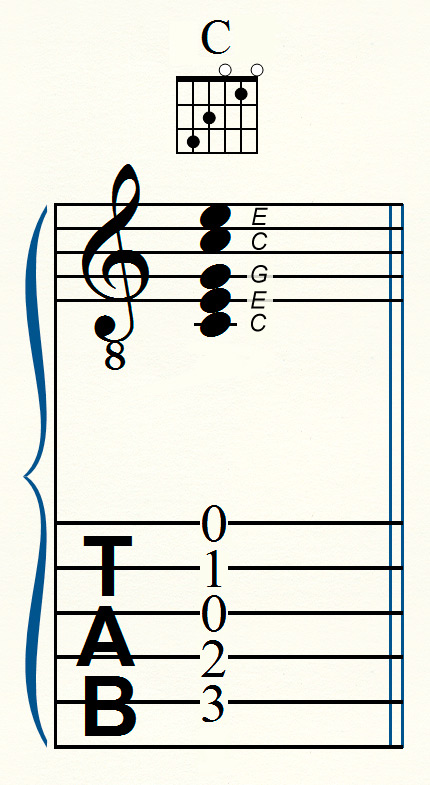
If you haven't had any music theory, it might be helpful to know that a c major chord is constructed of three different notes, c, e, and g, used in any combination, including multiple copies of each note (doubling). (Notice in the picture above that the chord contains only the letter names c, e, and g.)
The notes of a chord are called "members". The members of a c major chord are the notes c, e, and g.
The note that a chord is first constructed on is called the root. Chords are named after their roots - in this case, a c major chord. Hence, this chord is called a C chord and the note "c" is its root. Roots are most often placed on the bottom, but sometimes we place other notes on the bottom. (To make this article short and sweet, we'll not get into what makes it a major chord.)
CONFUSING FACT: Chords are by definition made of three or more different letter names. An exception to this rule - a power chord - has only two different letter names. Remind me again, why is music theory so confusing? ;-)
Next let's look at the same chord, but with a different note in the bass. (The bass note is the lowest note.) We're going to place the note "g" in the bass. We call this chord "C/G". We would pronounce the name of this chord "C slash G". Hey, folks, a slash chord has entered the building! Quick, hide! ;-) Here's what this chord looks like in staff, chord diagram, and tablature notation.
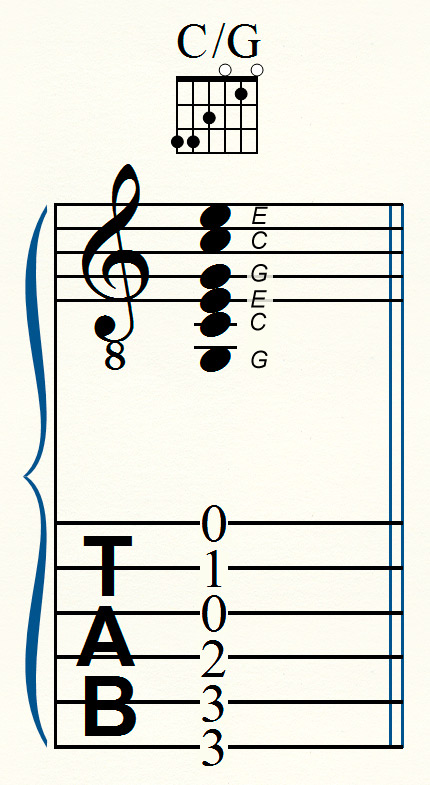
In summary, a slash chord is a chord symbol that designates a specific bass note. For example, the chord symbol "C/G" would mean to play a c chord with the note "g" in the bass.
Follow this simple rule to interpret slash chords:
- The part to the left of the slash is the chord.
- The part to the right of the slash is the bass note.

You may be wondering what difference it makes which note we use on the bottom of a chord. Good musicians choose bass notes carefully because the use of specific bass notes changes the function of chords quite substantially. For example, a chord with the root in the bass sounds more stable, while using a bass note other than the root will create tension. If Jason Voorhees composed music, maybe as an additional outlet for his angst, he would definitely use chords that avoid using the root in the bass. Frankly, the thought of a murderer composing music and getting it performed publicly completely freaks me out. ;-)
A chord with its root in the bass is referred to as being in "root position", while a chord whose bass note is not the root, but a different chord member, is said to be "inverted". A slash chord can be used to symbolize either one. For example, "C/C" would stipulate that a c major chord be played with the note "c" in the bass - root position - while "C/G" would represent an inversion.
Are you still afraid of slash chords? I hope not. If the thought of playing a slash chord still puts fear in your heart, break out your guitar or sit down at a piano and confront it. I promise that Jason will not jump out of the closet with a bloody knife. In fact, I bet he'll bring his bassoon and join you in a rendition of the sound track from Friday the 13th!
Jeff Anvinson, owner/operator of JLA Music
Website and most graphics are created inhouse by Jeff Anvinson, Owner/Operator of JLA Music
Some graphics are purchased from Can Stock Photo, used by permission, and are Copyright
© Can Stock Photo
JLA Music takes care not to infringe on anyone's rights. Please contact us at jla@jlamusic.com if you have questions.
Copyright 2023 © Jeffrey L Anvinson




